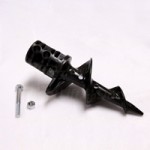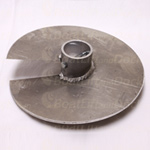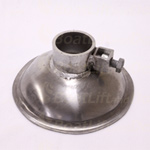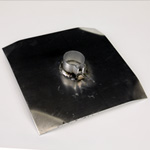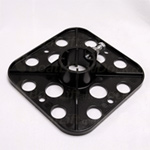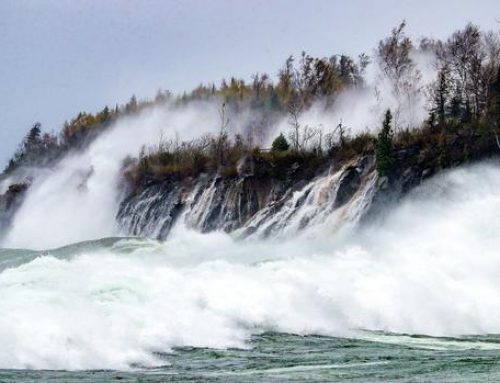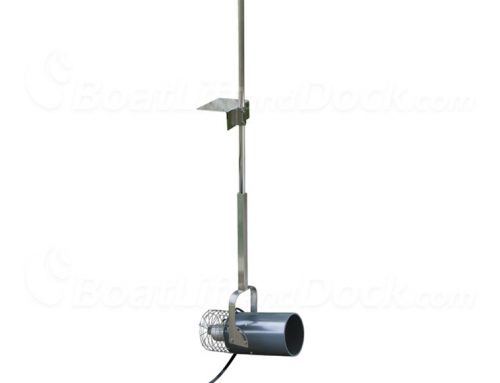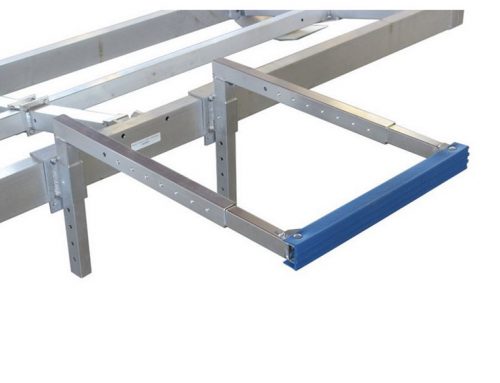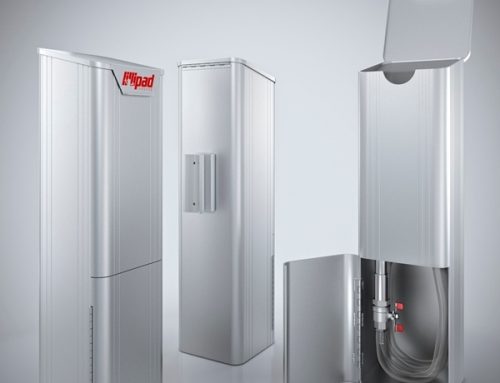Getting out on the water is one of the best ways to spend a warm day. Whether you swim, jet ski, or use a boat, you want to be able to get out onto, or into the water safely and easily. Chances are you have some kind of dock system and the stability of that dock is an essential, if not overlooked part of the experience. And, in truth, you should have a dock that doesn’t require your constant attention; fun being the point after all. To ensure that you do not have to spend allot of time wondering about your dock, you need to assemble it with the proper support technologies.
When designing a dock system the placement of the dock supports and the manner of “connection” to the bottom of the waterway require special attention. If you are in the process of selecting a dock system for your waterfront you will need to determine what type of system will work best for your needs and how that system will be assembled in place. There are several stabilization technologies on the market today that are designed to accommodate specific environmental conditions, that is, the specific “bottom conditions” in which they will be employed.
These “bottom conditions” are the conditions of the lake bottom: solid, semi-solid, sandy, muddy, mucky, rocky, and the “connection” is the manner in which the dock supports are secured on or into the lake bottom. Once you have determined the nature of the bottom conditions that you are dealing with, you will need to then determine the style of auger or base pad that will best suit your needs. As a brief example if you have a;
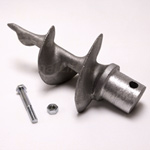 Solid, semi-solid, or sandy bottom: use a Standard dock auger or an auger/base pad combination. This gives you
Solid, semi-solid, or sandy bottom: use a Standard dock auger or an auger/base pad combination. This gives you
- Lateral stability
- A Strong connection to the bottom
- Enhances the safety of your dock
Dock augers are available in cast aluminum and military grade composite resin. Each of these materials has its own strengths and limitations yet they are both used to construct high quality, self- tapping augers that will insert into either 1.5” or 2” diameter dock posts.
Dock Augers: Cast Aluminum and Composite
One of the most effective methods for making the connection to the lake bed is through the use of dock augers. The dock auger is designed to “screw” into the bottom of the lake or river bed and secure the dock post to the bottom; in effect “leading” the dock post into the bottom. This secure connection accomplishes two very important things, the primary “connection” we have discussed and, in combination with the other dock posts, the addition of lateral stability to your dock, counteracting wind and wave action.
As we stated above the type of material that you choose for your auger is dependent on the bottom conditions you will be connecting to. The cast aluminum auger is very strong, yet this strength comes with reduced flexibility. This may lead to fracturing when you are attempting to “screw” the auger into the bottom as the increased torque you will be applying may stress the cast aluminum.
If you are concerned that the lake bottom may be too dense and that you will have to apply allot of torque, you may want to select the composite auger from Torque-D. This auger is constructed from military resin and combines the strength of the standard auger with an increase in flexibility. Both of these auger styles will work with a standard aluminum 2” dock pipe; the cast aluminum having an actual diameter of 1.75” while the resin auger features a two step design that will work with 2” pipe that has either a 0.009 or 0.125 wall thickness. Both of these choices are designed to effectively secure your dock post support system to the bottom of your waterway.
Mud Auger
If you discover that upon inspection of your lake bottom you will be dealing with muddy or mucky conditions you may need to employ a different style of auger. The standard auger, either cast aluminum or resin, will not provide the necessary “grip” under these conditions unless you are able to penetrate this muddy material and screw into a more solid substrate. If you are unable to get below the muck or mud then you have another option.
A mud auger is designed to combine the penetrating power of a self tapping auger with the lateral stability of a base pad. The mud auger is essentially a wide, round base pad that has been fashioned into an auger. The mud auger will work with dock pipe with a diameter of 1 7/8” to 2” and features an 11.5” round “pad”. This design allows the auger to “lead” your dock pipe down into the muddy or mucky conditions of your lake bottom and secure the dock post system. This “grip” provided by the extra surface area of the mud auger will resist the urge of the dock pipe to shift or pull out of the mud as a standard auger might do.
Base Pads: Aluminum and Composite
The mud auger is what we consider to be a transition product in that it combines the penetration of an auger with the lateral stability of a base pad. There are many styles of base pads on the market and they are generally employed when the lake bottom is too dense to allow for any significant penetration. For example you may have a very rocky lake or river bottom that resists your attempts to auger into it and secure your dock posts. In this instance you will need a style of base pad that will work in these conditions.
Base pads are essentially platforms that sit at the end of your dock support and either rest on or “grip” the bottom. There are specifically designed to work in rocky terrain that will sit on top of or into the rocky bottom and stabilize your dock. On the other hand if you have a solid lake bottom but are unable to auger in you can use any one of several base pad designs that either provide a flat surface or employ to increase the grip of the system. In most of these designs it is possible to employ an auger as well, increasing your overall stability.
Like the augers, the base pads that are available are constructed from aluminum or round, square, cup, and rectangular designs. The resin options are porous, meaning that they have holes or spaces in the body of the pad which increases their “grip” and reduces their weight. There are also base pad designs that work specifically with certain brands of dock supports and accommodate square posts.
If you are choosing to purchase a complete support system instead of assembling it out of standard dock hardware then the base pad will most likely be included in the package. However, you will still need to know the bottom conditions and decide on the style of pad you will need, cupped, flat, square, etc.
The unseen aspects of your dock system are by far the most important. The dock augers and base pads give you a solid and stable connection to the bottom and lend the dock posts and supports lateral stability. Upon these unseen elements rests the stability and safety of your whole dock system and the decisions that you make in the assembly of your dock are very important.
We strive to give you the necessary information that you require to make your decisions. With the correct stability system in place beneath the surface of your waterway you can rest assured that the dock you have above the water line is stable and functions according to your specific expectations.
In the end you and those you care about will be using the dock and we want to make sure that we provide you with as much information as possible so that you and yours enjoy the final product of your efforts.
© 2013 BoatLiftandDock.com

